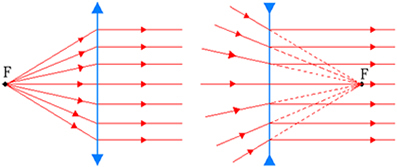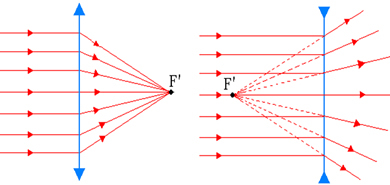Many physical concepts we study at school are applied in our daily life. What often happens is that we don't see them because we don't give importance to the phenomena that surround us. We can say that because of this lack of observation, people in general often see the study of physics as an animal with seven heads.
One of the subjects that is inserted in our daily life and that many times the vast majority of people do not realize is linked to the study of Optics. Let's look at an example: when we are in front of a mirror, what do we see? We certainly see our image because of the reflection of light on the mirror's surface. The concepts of Optics are also embedded in the rainbow phenomenon, in photographic cameras, etc.
But the most basic example that can be cited, of the use of optical concepts, is the use of lenses, which we know as prescription glasses. Many people use this accessory, either for visual correction or simply for aesthetics (sunglasses).
In the study of spherical lenses, they are defined as an association of two diopters, that is, a lens is a transparent body bounded by the surfaces of two diopters. Remember that lenses can be converging and diverging.
Spherical lens focus
In spherical lenses we can find two types of foci that are called main focus object and main focus image, both of which are located on the main axis of a lens. Therefore, we can define that:
Do not stop now... There's more after the advertising ;)
O main focus object is the point (F) located on the main axis where the formation of an improper image is associated. Therefore, any ray of light that starts from the focus and falls on a spherical lens emerges parallel to the main axis of the spherical lens. Let's see the representation below.

O main focus image is the point (F’), also located on the main axis, where an inappropriate point is associated. Thus, every ray of light that falls parallel to the main axis always reaches the main image focus (F’). Let's look at the illustration below.

We can then define that in spherical lenses there are two symmetrical foci in relation to the optical center of the spherical lens. Therefore, F and F’ are at the same distance from the optical center of the lens. And finally we conclude that in the converging lens the focus is real and in the diverging lens the focus is virtual.
By Domitiano Marques
Graduated in Physics
Would you like to reference this text in a school or academic work? Look:
SILVA, Domitiano Correa Marques da. "Focus of a Spherical Lens"; Brazil School. Available in: https://brasilescola.uol.com.br/fisica/focos-uma-lente-esferica.htm. Accessed on June 28, 2021.



